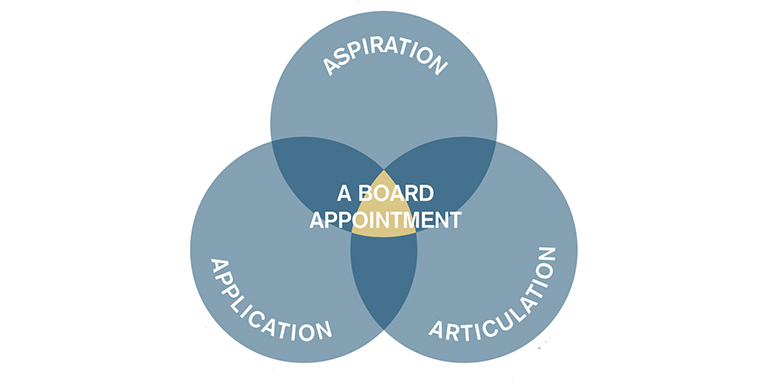Directors and Officers Insurance is usually directed at covering the defence costs and settlements of proceedings against the Directors and Officers of a company for claims made against them. Each D&O policy is different but many will include cover for bail bond, crisis costs, public relations costs and losses for civil fines and penalties. Claims may arise from various stakeholders and could arise as a result of allegations of misrepresentation, misleading and deceptive conduct or other wrongful acts.
A typical D&O policy structure includes the following sections
Side A Coverage (Directors & Officers/Insured Persons)
Insurance protection for the Directors and Officers when indemnification is not available to the Directors and Officers of the company resulting in a personal liability risk – Its sole purpose is to protect the individual directors and their personal assets and is the final protection if the company is unable to indemnify the Directors & Officers itself.
Side B Coverage (Company Re-Imbursement)
Insurance protection for the Company when they indemnify a Director and/or Officer of the company, in the form of reimbursement from the insurer. Side B is a form of balance sheet protection for the company and the transfer of the indemnity exposure that is agreed in the company’s deed of indemnity.
Side C Coverage (Entity Securities Liability)
Insurance protection for the entity’s own liability, specific to securities laws. It is balance sheet protection in the event the company is also named in a securities claim. Please note that many insurers are no longer offering side C coverage due to claims history over recent years in Australia.
How do I purchase D&O insurance?
Individual D&O products have become harder to obtain as the general D&O market has hardened. Now it is much more commonly purchased by a company for its Board of Directors and senior officers.
Your D&O policy will have a number of standard exclusions and some more customised exclusions
Personal Conduct Exclusion
This exclusion is part of every Directors and Officers policy and excludes dishonest or fraudulent acts committed by an insured. It can extend to exclude intentional violation or breach of law/regulation and unfair profit or gain to which an insured has no legal entitlement. It is worth noting that most policies defend the Directors & Officers until final adjudication and policies typically include severability clauses that isolate the Wrongful Act or conduct by one insured so that it is not imputed to other insureds.
Bodily Injury/Property Damage
The policy will not respond to a claim for Bodily Injury & Property Damage as this exposure is typically covered by a Public Liability policy. This exclusion often has a write-back (gives coverage back) for Defence Costs, Employment-Related Wrongful Acts and Security Claims.
Prior & Pending Exclusion
Prior & Pending Exclusion excludes cover for any pending or prior litigation involving the Company that has begun before the Prior & Pending date of the policy.
Insured Versus Insured for USA Claims
There are many variations to this exclusion, but the main purpose is to exclude cover for dispute between insureds / the company and an insured in the USA.
Some examples of exclusions that are placed by insurers on the policy are as follows:
Future Offering Exclusion
This exclusion states that any future offering of securities is excluded. There can be amendments to this exclusion to include a threshold and jurisdiction limitation. This is important for the managers of the D&O insurance, as they must notify the broker/insurer to ensure future capital raisings are underwritten and can be covered.
Major Shareholder Exclusion
This exclusion has a threshold for major shareholders (i.e. 10/15/20%) and the policy will not cover a claim brought by a major shareholder against the Directors & Officers. This exclusion usually has a requirement that the major shareholder has a holding above a threshold together with a board position to trigger the exclusion.
Retroactive Date Exclusion
This excludes any wrongful act committed or alleged to have been committed prior to the inception of the policy. This is a way for insurers to exclude past acts and make the policy only forward-looking.
Insolvency Exclusion
This exclusion removes any coverage for claims arising out of insolvency. Your broker can negotiate the removal if the company shows their financial position is sound and they can internally fund the company’s operations for 18+ months.
What is required to obtain a quote?
Public Companies have most of their information available to the public, but we recommend the following for quoting process:
- Completed proposal form;
- Prospectus or information memorandum;
- Corporate Presentation / Business Plan to show a summary of the company’s present situation and outlook;
- Insurer meeting with key executives (sometimes press releases, financials and the proposals forms don’t tell the full story, in which case we recommend a meeting with the insurers, so they become more familiar with the company and key people).
Price Influencers
The cost of a D&O liability insurance policy for a public company can vary widely. Policies can start in the thousands for a small public company with small limits up to millions of dollars for ASX 200 listed companies.
The insurers underwrite several items which impact the pricing of a D&O policy/quote, including:
- The size of the organisation.
- Board and management’s experience and history.
- The number of shareholders.
- The number of employees.
- The scope of the operations.
- Jurisdictions of the operations.
- The financial strength of the organisation.
- Policy structure (include entity coverage Side C).
- Claims history.
Claims Examples
ASIC investigation, receiver/liquidator examinations, and a class action
As a result of short selling, a number of the insured’s debt covenants were triggered. The insured was unable to refinance their debt, and as a result, an administrator and a receiver were appointed. Subsequently, the company was placed into liquidation.
An aggressive and wide-ranging ASIC investigation was undertaken, and public examinations of the former directors and officers of the insured were conducted by both the receiver and the liquidators. This led to two criminal prosecutions (both successfully defended), a class action brought on behalf of the shareholders (subsequently withdrawn), a claim brought by an investment bank in respect of their off-market purchase of company shares, and most recently, a further criminal prosecution by the former CFO. The insurer assisted the directors and paid almost $15 million in defence costs.
Disclosure
The insured made an ASX announcement downgrading earnings expectations on a major construction project. Subsequently, the insured announced estimated losses on the project in excess of $100 million. ASIC commenced an investigation into market disclosure. A class action was commenced on behalf of shareholders who traded in shares for the period at question.
The D&O policy limit was eroded by defence costs and compensation payments.
Insolvent Trading
The insured created a special purpose vehicle (SPV) to house a controlling interest in a listed mining company (target). The multi-million-dollar purchase price for the shareholding was agreed upon. At the time of the purchase, the directors verbally agreed in principle with a third party for the financing of the acquisition. The third party failed to follow through with its agreement to provide financing and the purchase did not proceed. The SPV was wound up and a liquidator was appointed.
The liquidator initially conducted public examinations of the directors and company secretary of the SPV and then consequently commenced proceedings against the directors and company secretary of the SPV alleging they had traded whilst insolvent and failed to act with the requisite degree of care and diligence.
The quantum of the claim was almost AU$30 million-plus interest and costs, however, the claim was settled by the insurer for a significantly smaller sum. Approximately $500 thousand in defence costs were incurred in dealing with the public examinations, and in defending the claim against the directors and company secretary of the insured and SPV.
About KBI
KBI is a boutique insurance brokerage with a focus on Directors’ & Officers’ insurance. Our team has placed Directors’ and Officers’ Liability Insurance for over 300 public companies in Australia, Asia, North America and Europe, including the ASX, TSX/TSX-V, SGX, LSE, Nasdaq, NYSE and LSE/AIM.
Their team consists of senior brokers, lawyers and past ASX listing advisors. We add value to the process by helping our clients make an informed decision during the purchasing and claims process. We also continue to provide updates to our clients, so they are properly informed on the ever-changing landscape of Directors & Officers insurance. Want some more information or book a time with one of KBI’s D&O Insurance Experts here.
About the Author

David Schwarz is CEO & Founder of Board Direction – Australia’s leading board advertising and non-executive career support firm. He has over a decade of experience of putting people on boards as an international headhunter and a non-executive recruiter and has interviewed over one thousand non-executives and placed hundreds into some of the most significant public, private and NFP roles in the world
Share this article on your favourite platform!





